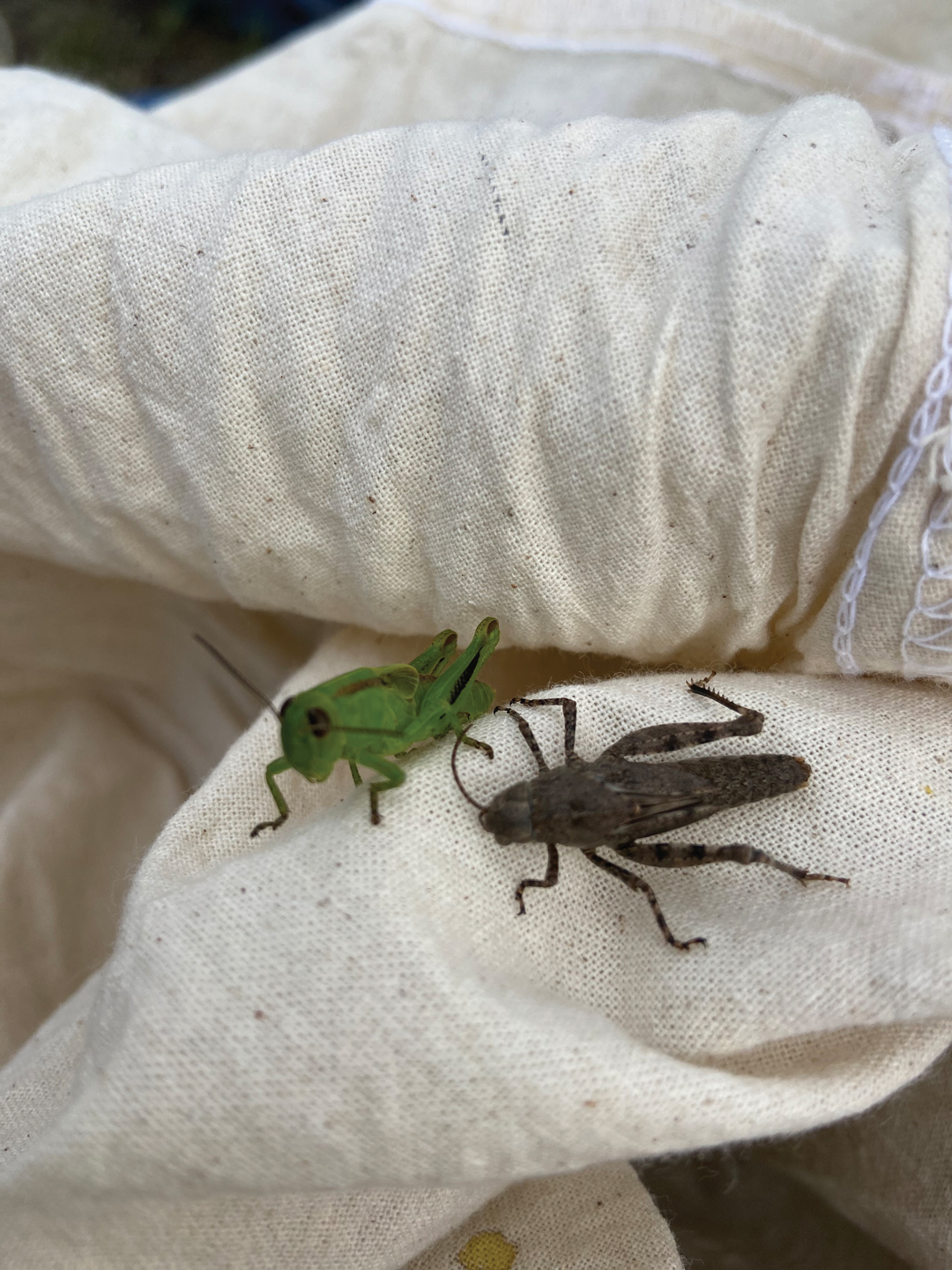ACRES OF INSECT INFO
BY ADELINE PANAMAROFF • PHOTO COURTESY OF MEGHAN VANKOSKY
For 27 years, farmers and entomologists have co-operated to record insect data for the Prairie Pest Monitoring Network (PPMN). This has produced a unique scientific resource not available in other parts of the world, said Meghan Vankosky, Agriculture and Agri-Food Canada entomology research scientist and PPMN co-chair. Her peers in countries such as Australia have not surveyed the ebbs and flows of insect populations as widely or for as long as the PPMN. “Having so much information from such a huge geographical area over such a long period of time is very unique from what I understand,” she said.
Funded by federal and provincial agriculture ministries and a long list of industry organizations that includes Alberta Grains, the PPMN was formed in 1997. Its mandate is to supply the Prairie farm sector with entomological expertise that remains in short supply. While the organization recruits farmers across the Prairies to volunteer cropland for study, the PPMN monitors the insect populations found there. At key times during the year, when pests such as bertha army worm, diamondback moth, pea leaf weevil and wheat midge are most active, scientists visit cropland with sweep nets and pheromone traps to conduct counts. For example, surveyors tally grasshoppers by walking straight lines in fields and on roadsides and making note of the number of insects that jump.
This information is then used to produce maps of the distribution and density of the monitored pests. The maps, along with accompanying information, can be used by farmers to inform their decision-making between growing seasons—by growing a pest tolerant crop variety, for example. Insect data may even influence a change in crop rotation the following year. In season, they may choose to treat high levels of pest infestation. The PPMN uses modelling to produce trend and projection maps that take seasonal weather into account. Throughout the growing season, the PPMN publishes weekly updates that include these maps, at prairiepest.ca.
“It provides a lot of valuable information for farmers to make current and future decisions for them to be more economical and environmental,” said Jeremy Boychyn, Alberta Grains director of agronomy and extension.
“We hope farmers or agronomists can take that information and use it to plan their scouting activities, so they don’t miss the best time to manage those pests,” echoed Vankosky. The PPMN also shares its vast supply of data with scientists, for use with various research projects.
“Since 2018, the PPMN, has incorporated more research on pest ecology and biology, as well as our typical monitoring work,” added Vankosky. “Some of our other research projects separate from the PPMN also collect helpful information, and we bring all of that together with the historical data we’ve collected to continually improve our ability to make predictions about insect development and risk to crops.”
The organization’s thorough records may prove a great resource in the face of climate change, which will inevitably affect the lifecycles of crop pests on a wide scale. “Considering the number of researchers involved in the Prairie Pest Monitoring Network, I do believe they are the best group to be looking at how some of these insects can impact farmers in the future,” said Boychyn.







Comments